Cubital tunnel syndrome
To view this page as a PDF; Click here
What is Cubital Tunnel Syndrome?
One of the main nerves supplying the hand is called the ulnar nerve. This is also called the funny bone nerve. At the elbow, there is very little padding, meaning the nerve is closer to the surface of the skin and more sensitive. If a person hits their inner elbow, the sensation can resemble an electric shock. This nerve passes into the hand through a passage called the cubital tunnel located at the elbow. Occasionally, this nerve can get squashed, stretched or irritated in this tunnel. This is called Cubital Tunnel Syndrome.
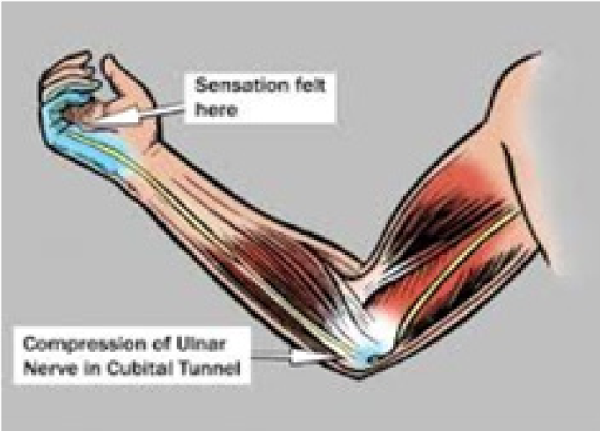
What causes Cubital Tunnel Syndrome?
Cubital Tunnel Syndrome can occur for a number of reasons, including arthritis, elbow fractures, sustained postures when the elbow is in a bent position, or when prolonged pressure is applied to the elbow - such as holding a phone or leaning on the elbow. It can occur at night. Some conditions can mimic the symptoms, such as arthritis of the neck.
What are the symptoms?
This can cause symptoms such as numbness, pain, or pins and needles in the forearm, little and ring fingers. In more severe cases it can cause muscle loss and weakness, difficulty holding or manipulating objects and difficulty bending and straightening your
How is Cubital Tunnel Syndrome diagnosed?
The specialist will diagnose Cubital Tunnel Syndrome through the way you describe your symptoms and an examination. A special test called a Nerve Conduction Study (NCS) may be required to help confirm the diagnosis. NCS is a test to measure the ability of a nerve to transmit impulses normally. In cases of suspected Cubital Tunnel Syndrome the ulnar nerve will be tested along with other nerves to be certain that your symptoms are not the result of other underlying conditions. Occasionally, other tests may be needed, such as blood tests, x-rays or scans.
What treatments are available?
Some cases will settle without any treatment.
Self-Management Strategies:
1. Exercises
Swelling or scarring anywhere along the nerve can cause the nerve to lose its mobility. Some health professionals believe that certain exercises can help with elbow movement and the ulnar nerve to glide gently through the cubital tunnel and help to may improve symptoms.
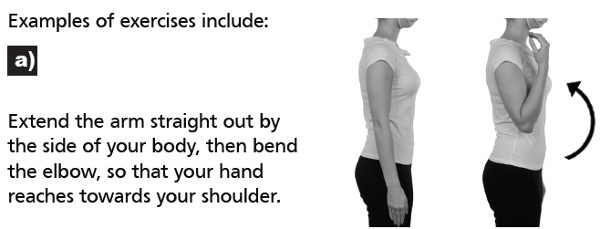
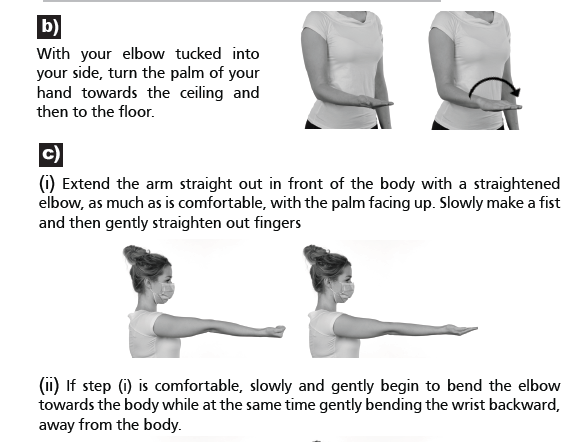
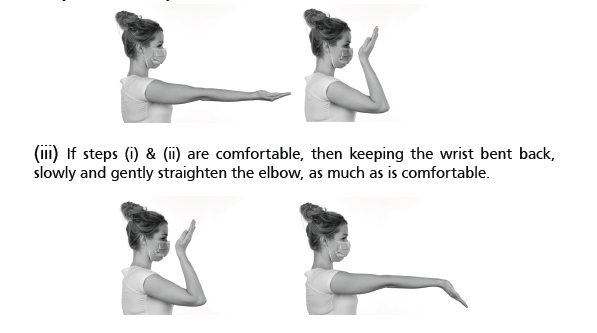
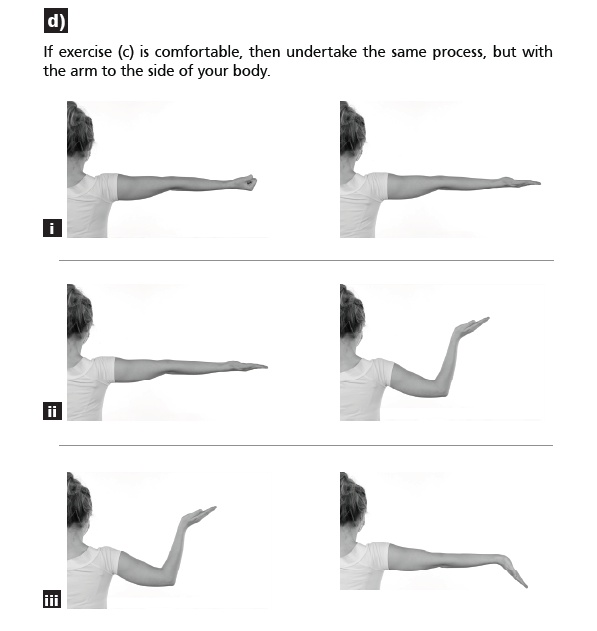

Initially, the easiest way to get relief from Cubital Tunnel Syndrome is to avoid actions that irritate the symptoms, such as:
• Sleeping with the elbow bent
• Holding a phone for a long time
• Typing or texting for extended periods
• Holding a book or tablet up for a long time
• Sitting with the arms on an armrest for a long while
• Leaning on the elbow
• Driving for a long time
• Driving with the arm resting on an open window
All these activities involve the elbow in the bent position or with direct pressure on the elbow.
Additional home treatment to try can include the following:
• Rest the arm and elbow when possible.
• Apply ice compression. This is ice wrapped in a cloth/towel applied to the area for 10 to 15 minutes several times daily.
• Loosely wrap the forearm with padding, such as a cloth, towel, or pillow, or wear an elbow support at night to prevent the elbow from bending.
• Wear an elbow pad during the day to give protection.
• Avoid clothing that compresses or restricts the elbow.
• Anti-inflammatory medications may be of benefit. However, check with your GP or Pharmacist if you are on any other medications.
• Consider your computer or writing workspaces. Is your chair the correct height to the table top? Ensure that your arm is supported without too much direct pressure or elbow bend.
If you participate in sport, consider a) the equipment you are using, such as weight/balance or size of grip, and b) your technique.
Other treatments that your doctor may recommend:
If the self-management approach does not help your symptoms and you find that everyday activities are still being affected, then the following treatments may be considered by your doctor;
a) Steroid Injection
Steroid Injections into the cubital tunnel may help reduce pain. Sometimes the injections are used when diagnosis is difficult, or to give immediate relief if the pain is very severe.
b)Surgery
When symptoms are severe or do not improve with other treatments, then surgery may be needed. This is called a Cubital Tunnel Decompression. This is usually performed as a day case which means you will go home the same day as your operation.
Further information on the procedure will be provided by the specialist if this is the option of choice.
Rydym yn croesawu gohebiaeth a galwadau ffôn yn y Gymraeg neu'r Saesneg. Atebir gohebiaeth Gymraeg yn y Gymraeg, ac ni fydd hyn yn arwain at oedi. Mae’r dudalen hon ar gael yn Gymraeg drwy bwyso’r botwm ar y dde ar frig y dudalen.
We welcome correspondence and telephone calls in Welsh or English. Welsh language correspondence will be replied to in Welsh, and this will not lead to a delay. This page is available in Welsh by clicking ‘Cymraeg’ at the top right of this page.